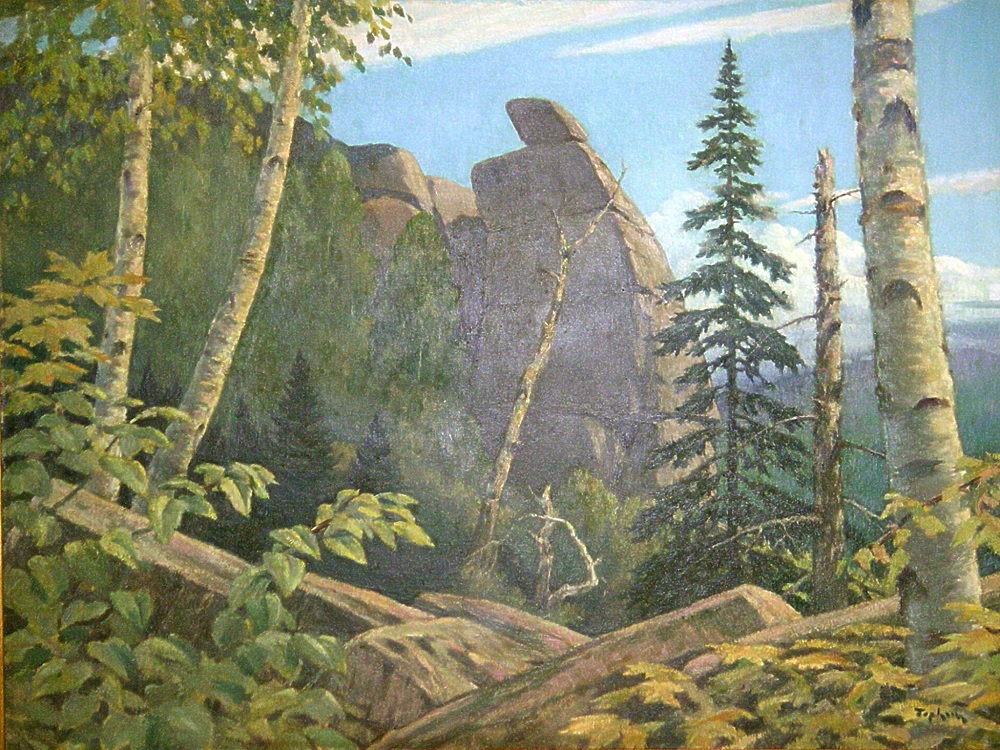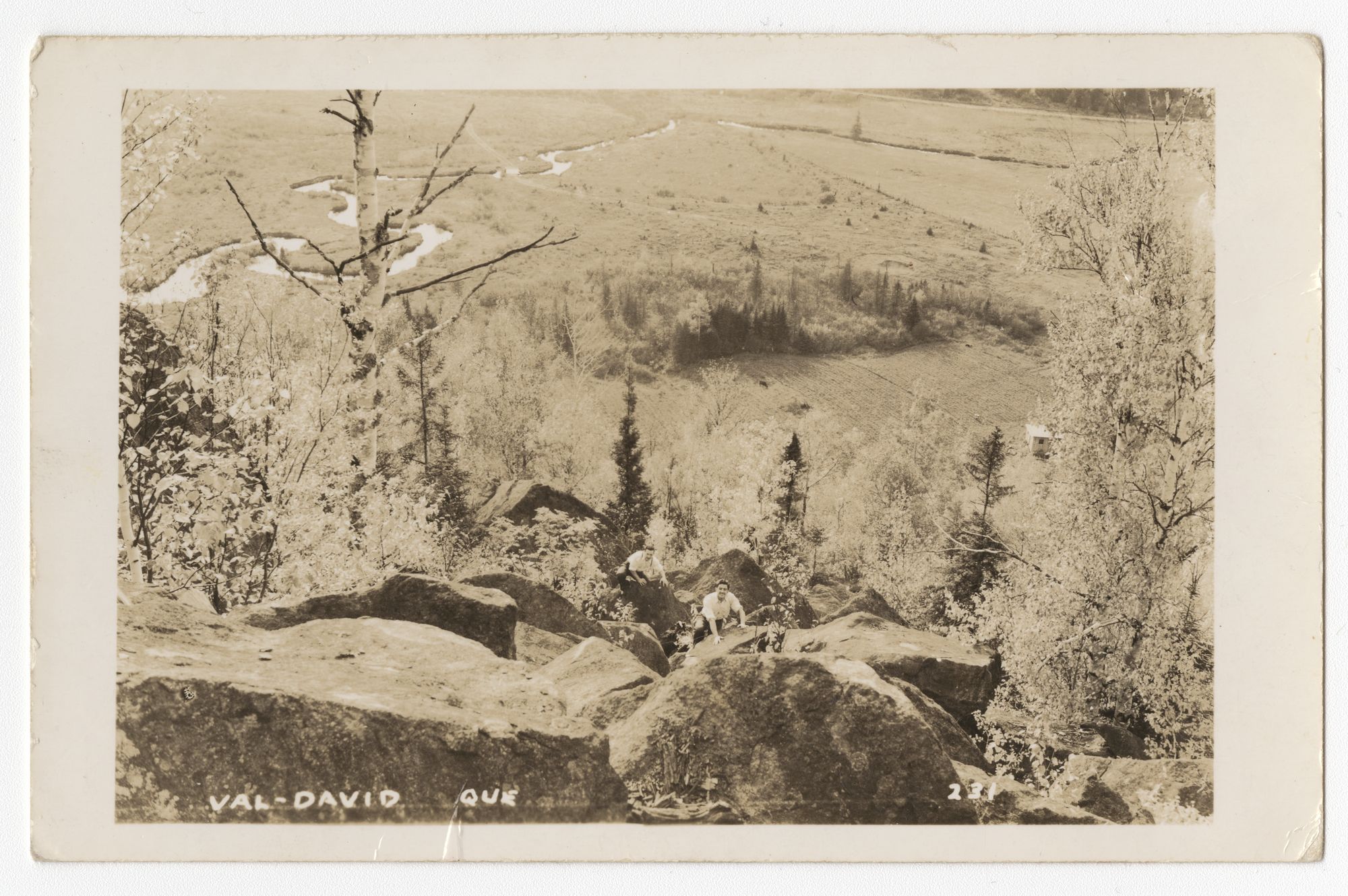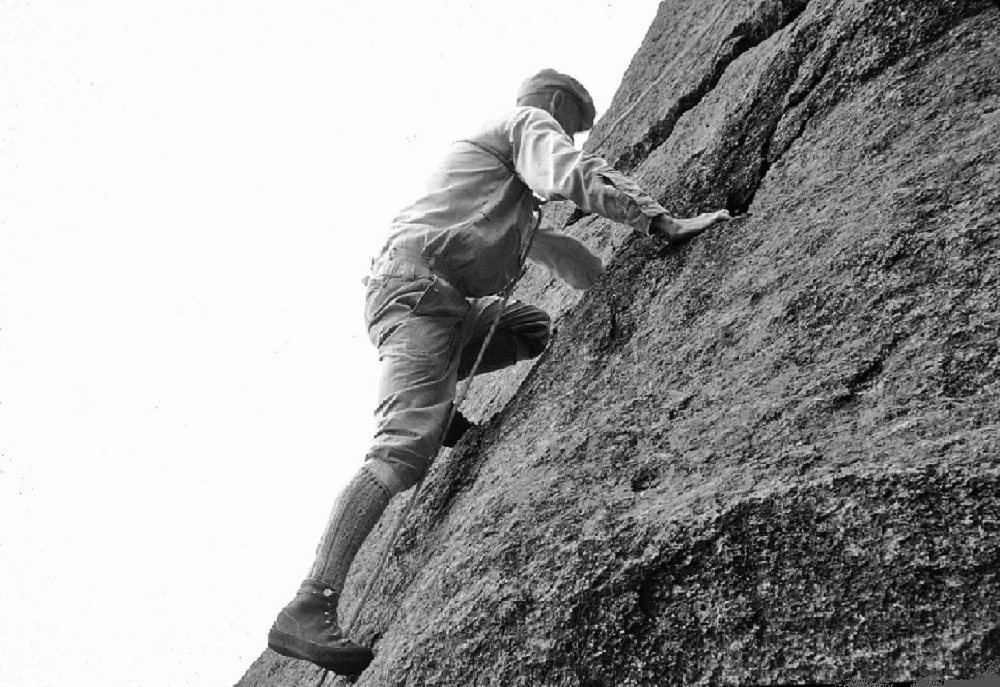A Revelation: Val-David Becomes Québec’s Rock Climbing Mecca!
ROCK-CLIMBING CONDITIONS PAR EXCELLENCE!
In the early 20th century, Val-David’s tree cover was still recovering from massive deforestation and the great forest fire of 1903. It had left the once lush and rocky escarpment country nakedly visible. It meant that, by the end of the 1920s, workers on the Canadian Pacific railroad and holidaymakers travelling on the “P’tit train du Nord” had clear views of the many rock walls that could be seen along the way.
Thanks to their height and the exceptional quality of the rock surface, these rocky hillsides are particularly suited to rock climbing. This rare type of rock is both solid and stable, unlike the French Alps or Canadian Rockies, where mountaineering was already taking place in this period. For the first pioneers, they were to discover that conditions were perfect for soon creating the birthplace of rock-climbing in Québec, right here in Val-David!
It wasn’t long before enthusiasm began to grip a new batch of outdoors aficionados. Indeed, climbing is an instinctively joyful activity, as shown by the image above in which these youngsters are taking a path leading to the summit of Mont Césaire and enjoying themselves like children.
Although an individual sport, rock climbing is nonetheless a psychological adventure that is both sensual and spiritual. At times, it may resemble a ballet, a sort of beautifully-rhythmed walk on high or a series of complex and powerful movements. The degree of incline of the wall has a direct impact on the level of difficulty of each route. The more vertical it is, the more difficult it will be. Yet there are exceptions, like slabs that are not so steep but offer little in the way of holds or purchase. Holds like these are so tiny that they are called crimps. In that case the climber counts more on balance to be able to move forward on the rock face.
In the region of Val-David, all these variations in the rock faces bring nuance into the movements that climbers will discover in the years to come.




